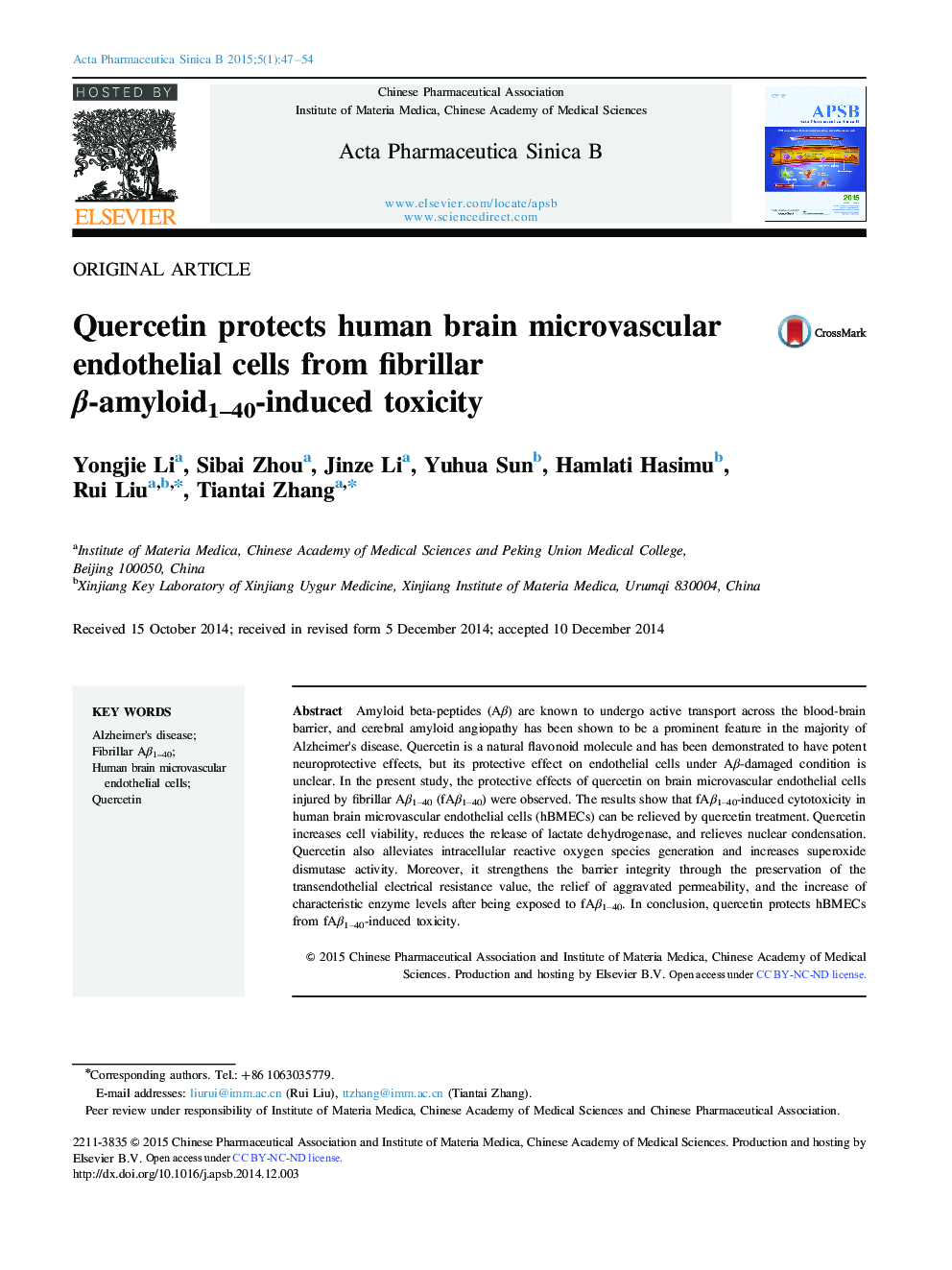| Article ID | Journal | Published Year | Pages | File Type |
|---|---|---|---|---|
| 2474748 | Acta Pharmaceutica Sinica B | 2015 | 8 Pages |
Amyloid beta-peptides (Aβ) are known to undergo active transport across the blood-brain barrier, and cerebral amyloid angiopathy has been shown to be a prominent feature in the majority of Alzheimer׳s disease. Quercetin is a natural flavonoid molecule and has been demonstrated to have potent neuroprotective effects, but its protective effect on endothelial cells under Aβ-damaged condition is unclear. In the present study, the protective effects of quercetin on brain microvascular endothelial cells injured by fibrillar Aβ1–40 (fAβ1–40) were observed. The results show that fAβ1–40-induced cytotoxicity in human brain microvascular endothelial cells (hBMECs) can be relieved by quercetin treatment. Quercetin increases cell viability, reduces the release of lactate dehydrogenase, and relieves nuclear condensation. Quercetin also alleviates intracellular reactive oxygen species generation and increases superoxide dismutase activity. Moreover, it strengthens the barrier integrity through the preservation of the transendothelial electrical resistance value, the relief of aggravated permeability, and the increase of characteristic enzyme levels after being exposed to fAβ1–40. In conclusion, quercetin protects hBMECs from fAβ1–40-induced toxicity.
Graphical abstractQuercetin increased TEER and permeability efficient (Pe) values of fluorescein sodium and FITC-albumin. From the results of this study, quercetin improved barrier function of hBMECs against fAβ1–40-induced toxicity. Figure optionsDownload full-size imageDownload as PowerPoint slide
